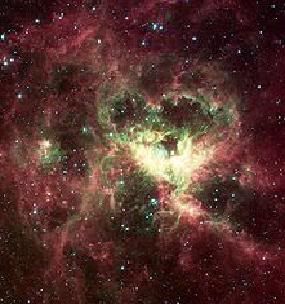|
|
Post by glactus on Jan 5, 2009 11:26:09 GMT
 The Tarantula nebula The Tarantula Nebula (also known as 30 Doradus, or NGC 2070) is an II region in the Large Magellanic Cloud . It was originally thought to be a star, but in 1751 Nicolas Louis de Lacaille recognized its nebular nature. The Tarantula Nebula has an apparent magnitude of 8. Considering its distance of about 180,000 light years, this is an extremely luminous object. Its luminosity is so bright that if it were as close to Earth as the Orion Nebula, the Tarantula Nebula would cast shadows. In fact, it is the most active starburst region known in the Local Group of galaxies. It is also the largest such region in the Local Group with an estimated diameter of 1.000 light years. The nebula resides on the leading edge of the LMC, where ram pressure stripping, and the compression of the interstellar medium likely resulting from this, is at a maximum. At its core lies the extremely compact cluster of stars that produces most of the energy that makes the nebula visible. The closest supernova since the invention of the telescope, Supernova 1987A occurred in the outskirts of the Tarantula Nebula.  Credits: This is a NASA/Spitzer image |
|